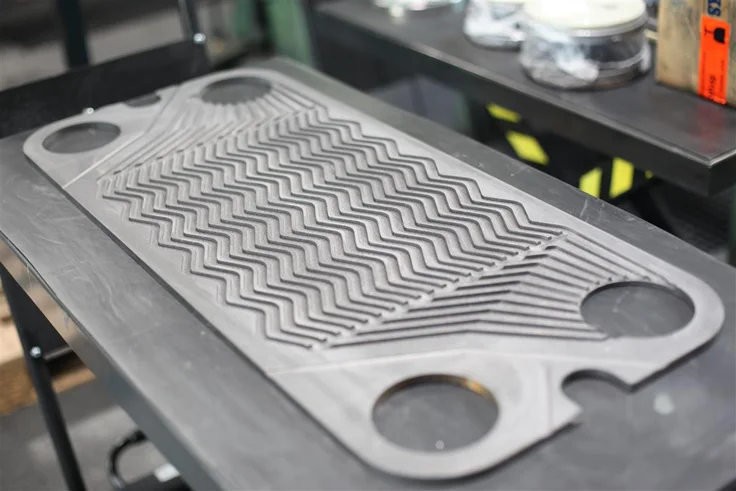Graphite plate heat exchangers
Brochures
pdf - 4.89 MB
-
Impervious graphite plate heat exchangers
Impervious graphite plate heat exchangers are adapted to the heating and cooling of highly corrosive chemicals. This design is the most compact and most efficient type of impervious graphite heat exchangers.
Our impervious graphite plate heat exchangers are made of many 10 mm thin graphite plates that have very large surface areas and small fluid flow channels for heat transfer.
Heat is transferred by conduction through the graphite plates material.
Plate exchangers work with countercurrent flows which allows low temperature differences, rapid temperature changes, and high efficiencies.
-
Materials
- GAB GPX 1, GPX 1T , or GPX 2 plates
- Pressure plates and flanges: PTFE carbon steel
- Tie rods, nuts, bolts, washers, springs: stainless steel
- PTFE gaskets between the plates
-
Design
- Modular design: number of plates, size of plates and number of passes can be adjusted
- Different plate sizes: GP 25 and GP 40
- PTFE lined steel nozzles
- Thermal expansion compensation ensured by helicoidal springs
-
Key features
- Design pressure: up to 7 bars (standard) or 8 bars
- Design temperature: -30°C to +200°C (-22°F to 392°F)
- Heat transfer area: up to 29 m²
- Nozzle sizes: DN80 / DN100 PN16
- Design: according to European PED, ASME code on request
-
Key benefits
- Outstanding corrosion resistance against acid
- Great heat transfer performance thanks to adjustable cross sections and high turbulence on both sides
- Easy disassembly
- Ability to mechanically clean each plate if necessary
- High operational safety
- Extremely compact, sturdy and modular design
- Short lead time
- ong lifetime
-
Main applications
- Cooling and heating of ultra-corrosive chemicals
- Heat recovery between two ultra-corrosive chemicals
Industrial processes:
- Crop protection
- Fine chemicals
- Active pharmaceutical ingredients
- Fire retardants
- Flavors and fragrances
- Vitamins
- Flocculants
- Treatment, purification and concentration of spent acids
and many more…
-
Plate & frame heat exchanger
Plate & frame heat exchangers are made of many 10 mm thin plates that have very large surface areas and small fluid flow channels for heat transfer. Heat is transferred by conduction through the plate's material. Plate heat exchangers work with countercurrent flows which allows lower approach temperature differences, high temperature changes, and increased efficiencies.
The thermal performance of plate heat exchangers can vary significantly. It is therefore essential to select the type and size of plate & frame heat exchanger that is the most adapted to the specific application and industrial process. There are several considerations including flow rate, pressure drop, risk of erosion, design pressure and temperature, materials compatibility, fouling, and many more that should be taken in account.
-
Product Literature
Technical documentation
12/15/2023
Heat exchangerspdf - 4.89 MB





